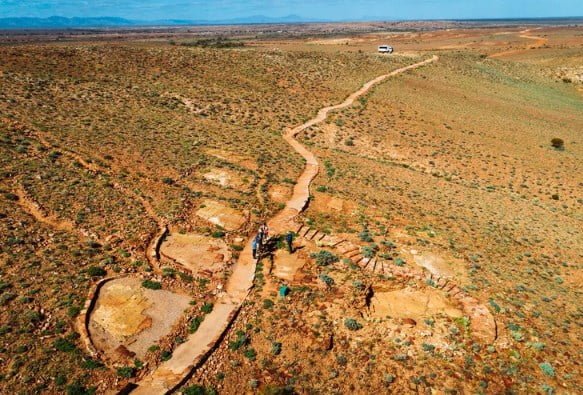Australia is the flattest and driest inhabited continent on the planet, thanks in large part to the Outback, which covers most of the country. Yet, what many people don’t know is that much of the Outback was once an ocean floor — and it still hides the fossilized remains of the oldest animals on Earth.
These ancient fossils, called Ediacara biota, are now protected as part of the new Nilpena Ediacara National Park, which opened to the public for the first time on Thursday, April 27. The park is already making waves for its fossil beds, which visitors can see up close, and the ongoing work by Mary L. Droser, an American paleontologist who unearthed one of the Nilpena’s most renowned fossil beds.
There are already almost 40 discovered fossil beds at Nilpena and the work is ongoing. Visitors to the park will be treated to a world-class fossil experience that includes guided tours to see the beds and fossil up close, and an audio-visual recreation that brings the ancient fossils to life.

Due to the international significance of the findings at Nilpena and the ongoing work by Droser and her team, park visitors must book a guided tour to see the fossils. Ross Fargher, owner of the nearby Prairie Hotel, is currently the only tour operator who can run tours to the fossil site. This is significant because Fargher has played a personal role in the timeline of Nilpena. He stumbled upon several fossilized lifeforms in the ‘80s and bolstered the findings by Reg Sprigg, an Australian geologist who found the world’s most abundant Ediacara biota in the ‘40s.
Droser is also part of a team preparing the nomination of the Flinders Ranges, where Nilpena Ediacara National Park is located, as a World Heritage Site.
Nilpena Ediacara National Park is located in the Australian state of South Australia and is around six hours by car from Adelaide. Entry to the park is free, but guided tours must be booked in advance and start at $160.
